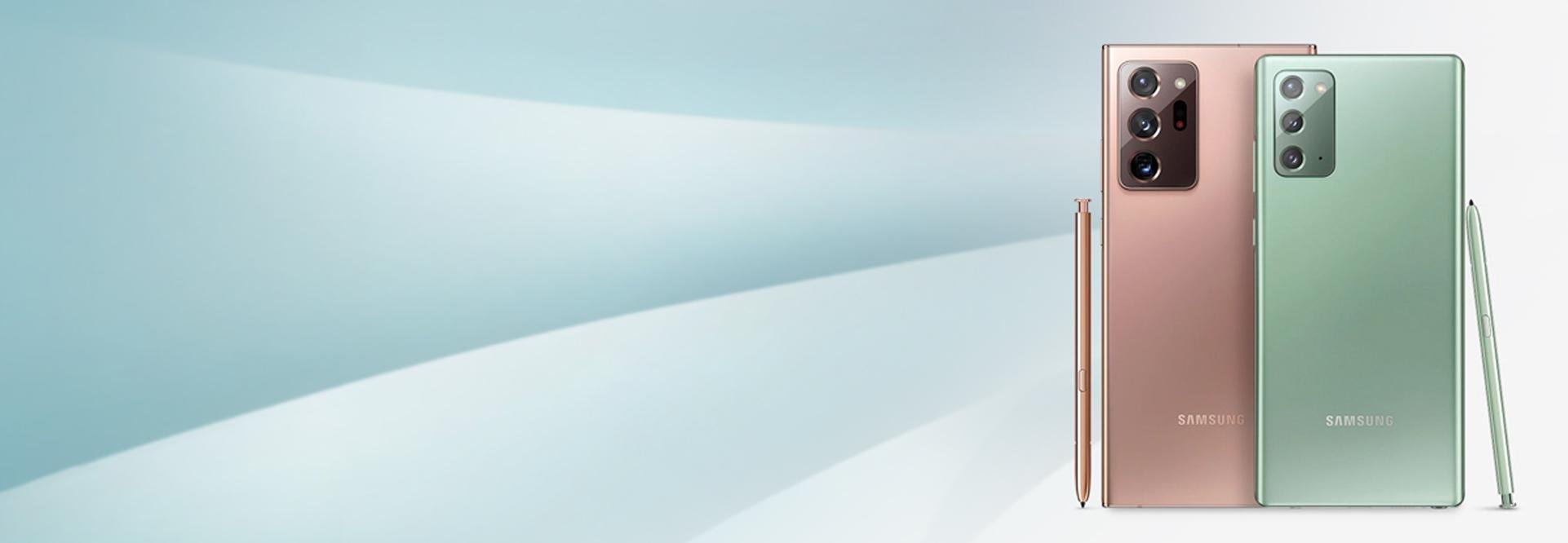
Samsung decided to launch its high-end range of power smartphones in the winter of 2020. What would usually be a massive event was forced to go online this year, but that didn’t stop Samsung from revealing the impressive new Galaxy Note 20 and Galaxy Note 20 Ultra. From what we’ve seen, this is one of the best [smartphone ranges](https://www.mondo.co.za/deals/search?device=phone&brand=samsung) to be released this year.
__Under the Hood__
There are slight differences between the Note 20 and Note 20 Ultra. While both get an upgrade to their processors, the smaller Note 20 gets 8 GB of RAM while the bigger Note 20 Ultra gets a whopping 12GB of RAM. However, it must be noted that the Note 20’s 8GB of RAM is nothing to scoff at as it is on par with most mid-range laptops these days.
Both devices are fast and run smooth, especially when loading apps or switching between the screen and stylus. Storage is never going to be a problem with these devices as both have a capacity of 256GB with the Note 20 Ultra being available in 512GB with space for a microSD card while the Note 20 doesn’t allow external memory. You will have 5G connectivity on both Notes.
__Screen and Body__
Seeing as the Note 20 is the smaller sibling, it has a 6.7-inch Super AMOLED display and FHD+ resolution (2400 x 1080). However, it’s still thicker than the Ultra by 0.2-mm. Samsung finished the Note 20 in what it terms ‘glasstic’ - a mix between glass and plastic. The screen is flat so you won’t get unexpected touches and the colours tend to pop much more. The Galaxy Note 20 is available in Mystic Grey, Mystic Green and Mystic Bronze.
The Ultra sports a 6.9-inch Super AMOLED display and the rear is coated in Gorilla Glass 7 and the front has a new textured haze finish, which helps to cut down on fingerprints and smudges. You can get the Note 20 Ultra in Mystic Bronze, Mystic Black and Mystic White.
Both devices are water and dust resistant and have a rating of IP68.
__The Best Cameras on a Smartphone?__
Samsung arranged the triple rear cameras on the Note 20 in a compact housing without much protrusion, unlike the Note 20 Ultra. It has a main 12MP camera alongside a 64MP zoom lens and a 12MP wide-angle lens so you can fit more into your shot. There is adequate resolution to play with for both optical and digital zoom. The Galaxy Note 20 also has a 10MP front-facing camera for your best selfies.
The camera system on the Note 20 Ultra is what sets it apart from other smartphones. Its main sensor is the 108MP camera with Laser Autofocus and Optical Stabilization. The zoom lens has a 12MP sensor and is capable of five times optical zoom. The wide-angle camera allows you to shoot twice the field of view of the main sensor. The selfie camera on the Note 20 Ultra is also a 10MP lens, the same as the one on the smaller Note 20.
__Bigger, Better Batteries__
Both devices have improved capacity with the Note 20 equipped with a 4,300mAh battery and the Note 20 Ultra sporting a 4,500mAh battery. Both feature 25W fast-charging capabilities.
__Even More Features__
Tucked into the bottom of both devices is the now-famous Samsung S-Pen, with a few subtle upgrades. It’s incredibly responsive with a 47-millisecond latency - which is said to be a 40 percent improvement over its predecessor. Even more impressive, the Note 20 Ultra boasts 9ms latency. You can use the S-Pen with air gestures to perform certain tasks on the device. The Samsung Notes app is where the S-Pen really shines with handwriting uptake, recognition and conversion into useful formats.
__Verdict__
It’s no surprise that the Samsung Note series is ahead of the competition. After almost 10 years in the market, it’s clear to see why it dominates the flagship landscape. These devices are packed with features that can almost compete with a fully-fledged personal computer, especially when you consider the Dex feature, which lets you plug the phone into a screen for a desktop-like experience. If you want the latest, greatest Android smartphone on the market, you can’t really do better than the Samsung Note 20.



